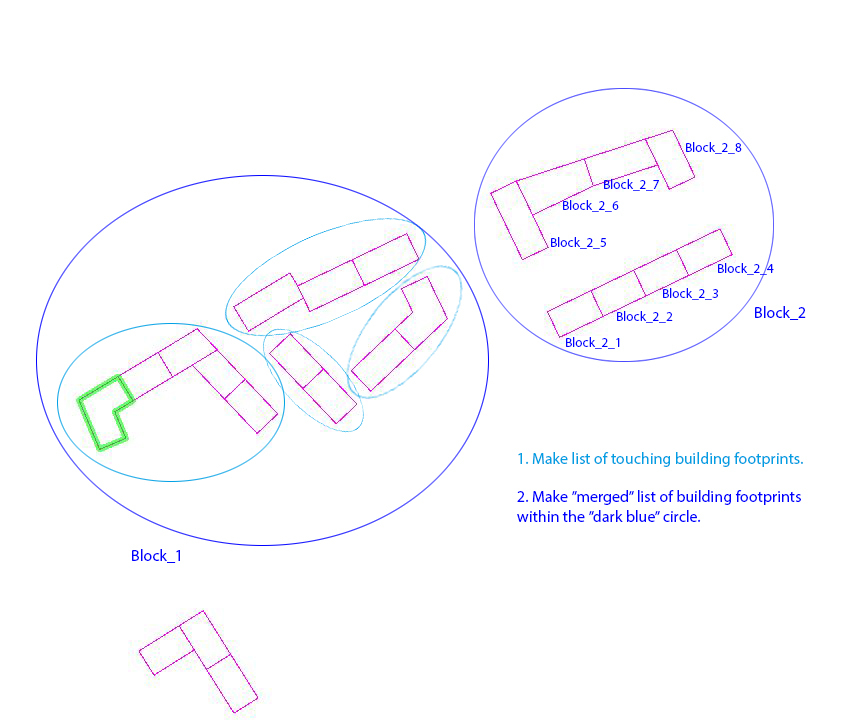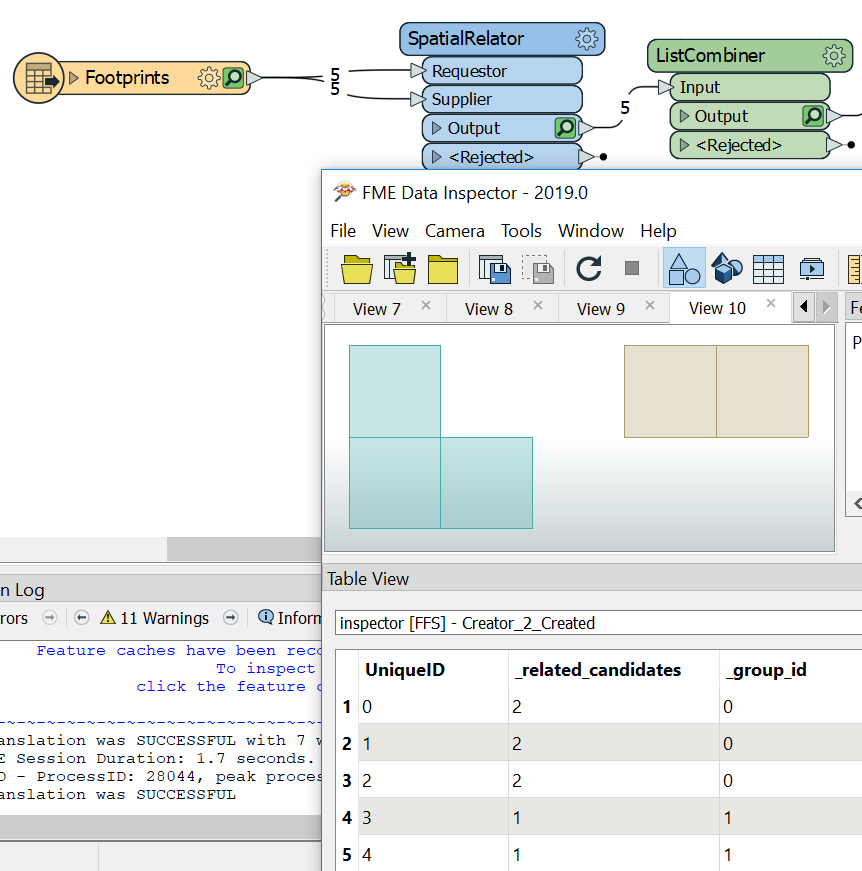
Hello,
I am trying to find a soultion of workflow in FME, as to the attached image.
My first attempt was to use the "NeighborFinder" and check if a footprint touches another. Then group/ list those (light blue circle). Then perhaps do another "NeighborFinder" check within a i.e. distance of 15, and make that a merged list (dark blue circle).
I appreciate any idéas. Thank you!
Best answer by ebygomm
View original




